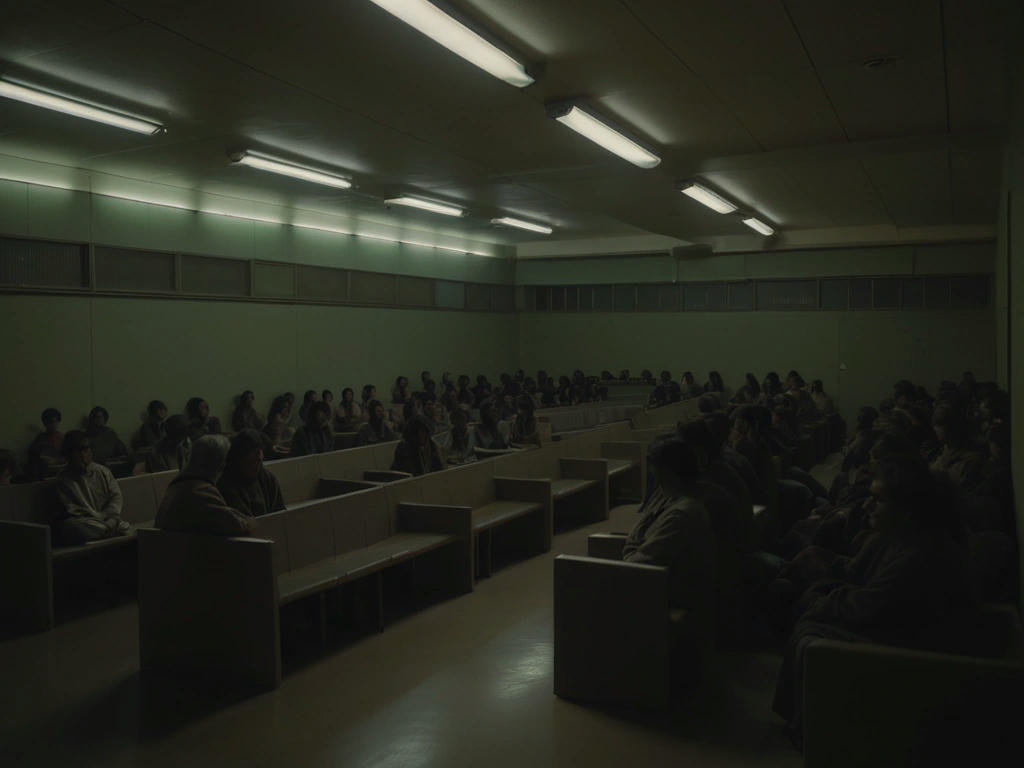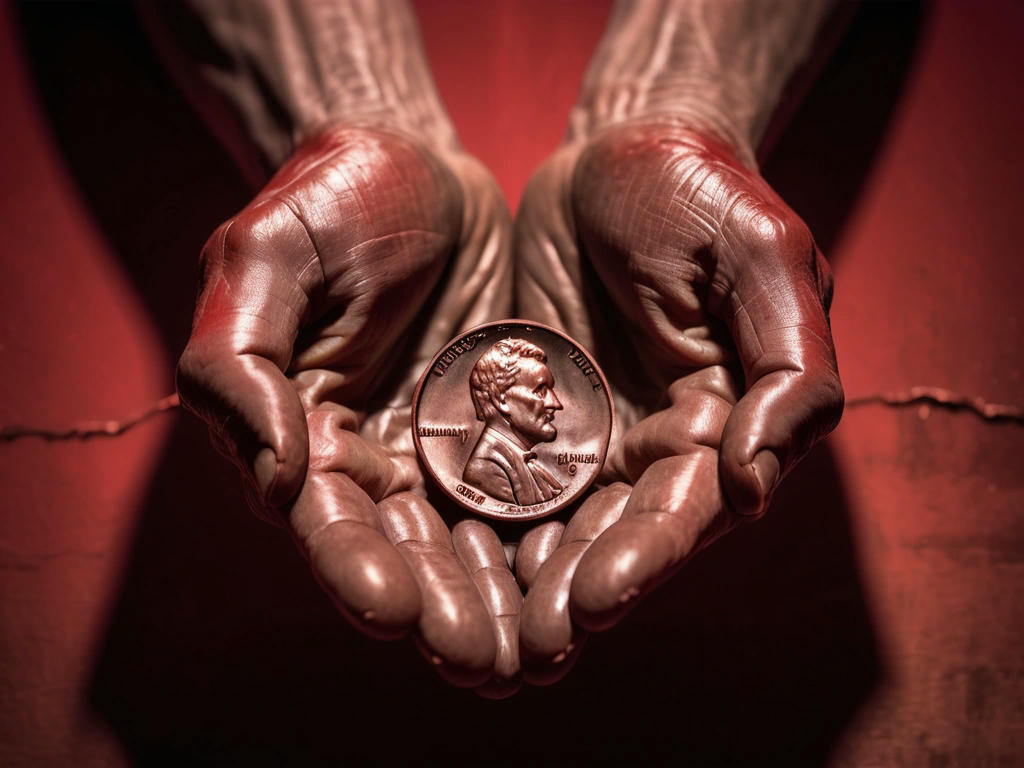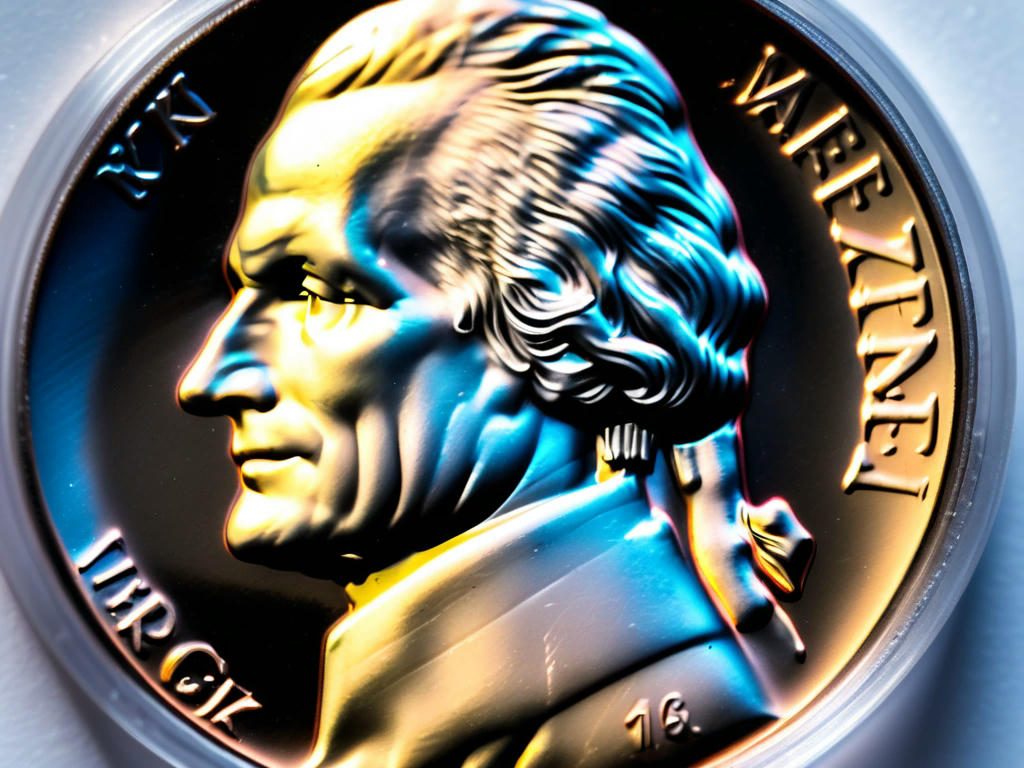In the peculiar way that dreams unfold, this one began in a room filled with subdued whispers and downcast eyes. A congregation of sorts, though not quite religious, gathered under flickering fluorescent lights that cast an institutional pallor over everything.
The air was thick with a system of control so insidious it manifested in pennies and dimes - mere cents tossed to those who performed acts of extraordinary courage or kindness. A mockery of reward, designed to diminish the human spirit. I watched as someone who had saved a life received their copper penny with trembling hands, the ultimate act of degradation disguised as recognition.
Then she appeared - a woman whose defiance came in the form of a simple nickel. But this was no ordinary coin. Housed in a clear plastic case that seemed too large for its contents, the 1957 Jefferson nickel bore the marks of a magnificent mistake. The double-struck coin showed Jefferson's profile ghosted by the reverse image, a beautiful error that transformed a five-cent piece into something precious.
The struggle for the coin became a struggle for dignity itself. As another man reached for it, his fingers grasping at the plastic case's edges, I held firm. The resistance was instinctive, primal - a recognition that this small token of imperfection represented something far more valuable than its monetary worth.
The dream concluded with a final act of rebellion - a red evaluation form, its blank spaces mocking the very concept of expression. The reprimand for using ink, for daring to leave a mark, revealed the true nature of this world: a place where even the smallest assertion of existence was treated as an act of waste.
When consciousness finally broke through, the dream's message lingered: in a world designed to minimize human worth, even the smallest tokens of uniqueness become powerful symbols of resistance.


